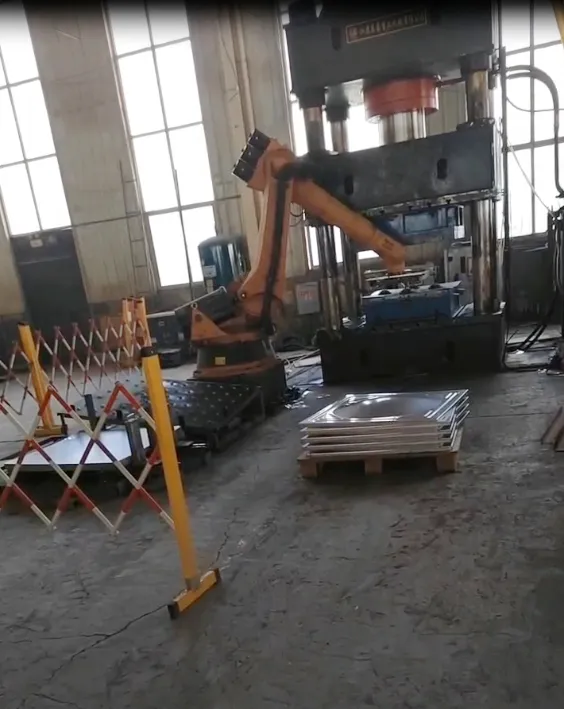loading...
- No. 9, Xingyuan South Street, Dongwaihuan Road, Zaoqiang County, Hengshui, Hebei, China
- admin@zjcomposites.com
- +86 15097380338
- Welcome to visit our website!
FRP Water Tank Solutions for Efficient Storage and Durability
Understanding FRP Water Tanks Advantages, Applications, and Maintenance
Fiber Reinforced Plastic (FRP) water tanks have become increasingly popular in various industries due to their superior strength, durability, and lightweight properties. These tanks are made from a composite material that combines fiberglass with a polymer matrix, creating a structure that can withstand the harshest conditions while delivering optimum performance. In this article, we will explore the advantages of FRP water tanks, their applications, and some essential maintenance tips.
Advantages of FRP Water Tanks
One of the foremost benefits of FRP water tanks is their resistance to corrosion. Traditional metal tanks can suffer from oxidation, leading to leaks and contamination of the stored water. In contrast, FRP materials are highly resistant to chemical exposure, making them ideal for storing potable water as well as various chemicals and wastewater. This durability extends the lifespan of the tank, providing significant cost savings in the long run.
Moreover, FRP water tanks are lighter than their metal counterparts, which simplifies transportation and installation. This is particularly advantageous in locations that may not have the infrastructure to support heavy equipment. The lightweight nature of FRP allows for easier handling and reduces installation costs, as fewer resources are needed to set up the tank.
Another compelling advantage of FRP tanks is their insulation properties. They can effectively maintain the temperature of the stored water, which is crucial in preventing the growth of bacteria and algae. This thermal stability is especially important in regions with extreme temperature fluctuations.
Applications of FRP Water Tanks
FRP water tanks are versatile and have a wide range of applications across various sectors. In the agricultural industry, they are commonly used for irrigation water storage, enabling farmers to optimize their water usage efficiently. In residential settings, these tanks serve as reliable solutions for rainwater harvesting systems, providing supplementary water resources during dry seasons.
In industrial applications, FRP tanks are utilized for chemical storage and wastewater treatment. Their corrosion resistance makes them suitable for holding various industrial fluids without the risk of leakage or chemical reactions that could compromise the integrity of the tank. Additionally, they are often used in the oil and gas industry for the storage of fuels and other hazardous materials.
Furthermore, FRP water tanks can be used in fire protection systems, where the stored water must be easily accessible and reliable in an emergency. Their robust design ensures compliance with safety regulations, providing confidence in critical situations.
frp water tank

Maintenance of FRP Water Tanks
To ensure the longevity and optimal performance of FRP water tanks, regular maintenance is important. Here are some essential maintenance tips
1. Routine Inspections Conduct periodic inspections of the tank to check for any signs of damage or wear. Look for cracks, leaks, or changes in shape that could indicate structural issues.
2. Cleaning Clean the tank at least annually to prevent the buildup of sediments and biological growth. Use non-abrasive cleaning solutions and tools to avoid damaging the surface of the tank.
3. Check Sealants Inspect the joints and seals for any signs of deterioration. It is crucial to replace worn-out sealants to maintain the integrity of the tank.
4. Monitor Temperature If the tank is used for storing water, monitor the temperature regularly to ensure it remains within a safe range, thus preventing the proliferation of algae and bacteria.
5. Professional Servicing Consider scheduling professional maintenance checks to ensure that the tank operates efficiently and meets safety regulations.
Conclusion
FRP water tanks offer a reliable and efficient solution for various water storage needs. Their many advantages, including corrosion resistance, lightweight design, and insulation properties, make them an ideal choice across different industries. With proper maintenance, FRP water tanks can provide long-lasting service, ensuring the safe storage of water and other fluids. As technology continues to advance, the use of FRP materials will likely expand, boosting innovation in water storage solutions.
-
Transform Your Spaces with FRP Grating SolutionsNewsNov.04,2024
-
The Versatility and Strength of FRP RodsNewsNov.04,2024
-
The Excellence of Fiberglass Water TanksNewsNov.04,2024
-
The Benefits of FRP Grating for Your ProjectsNewsNov.04,2024
-
Elevate Your Efficiency with FRP Pressure VesselsNewsNov.04,2024
-
Welcome to the World of FRP Pressure VesselsNewsOct.12,2024
-
Unveiling the Future of Filtration: Why FRP Filter Vessels are a Game ChangerNewsOct.12,2024
